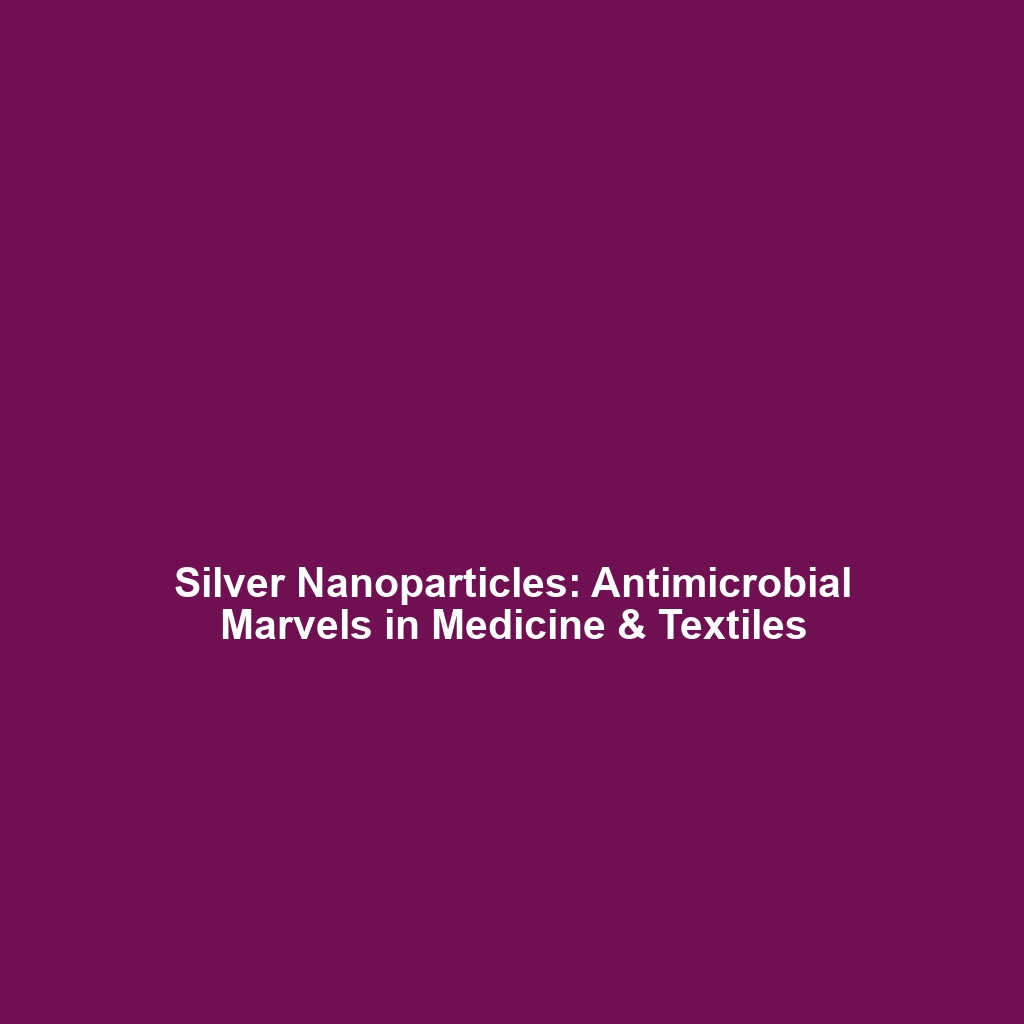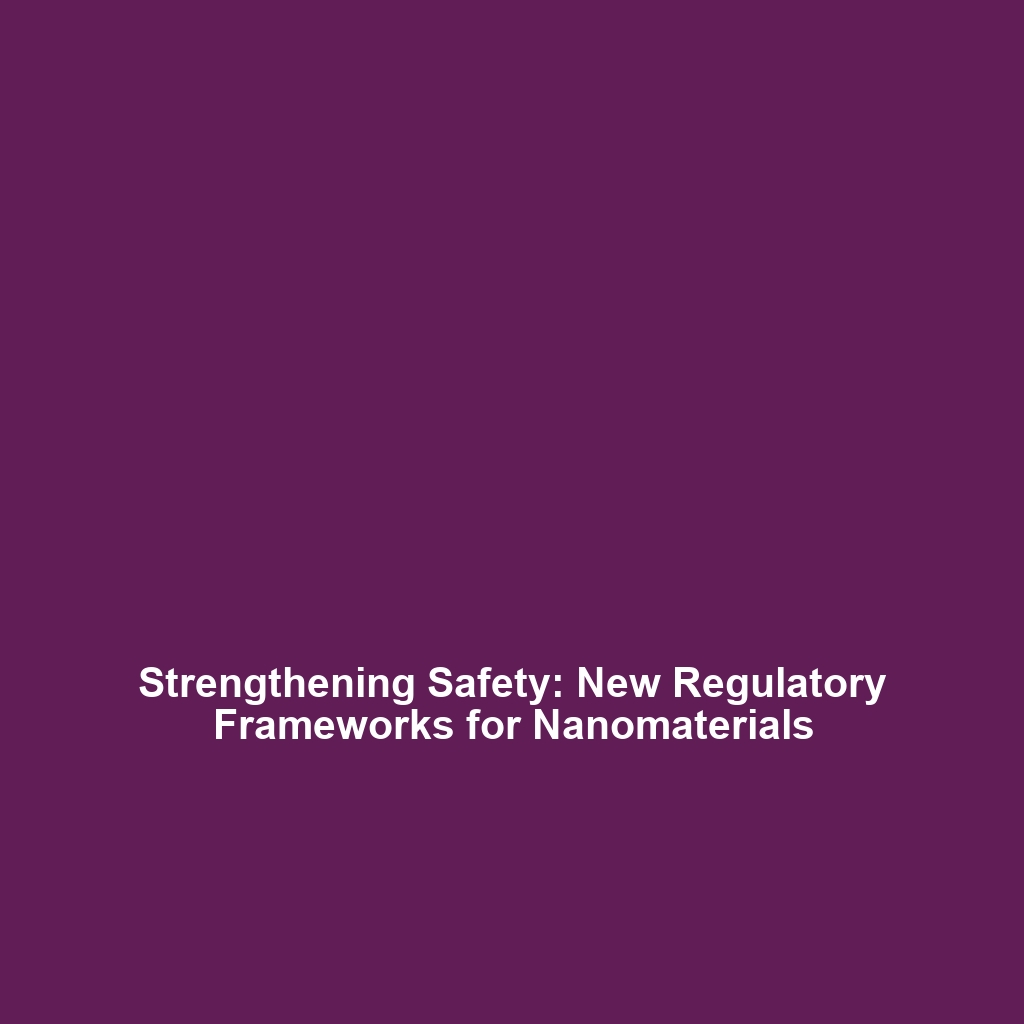Health and Environmental Concerns: Toxicity of Nanomaterials
Introduction
The emergence of advanced nanomaterials has led to unprecedented innovations across various fields, from medicine to environmental science. However, alongside these advancements, serious health and environmental concerns arise regarding the toxicity of nanomaterials. Understanding the potential impact of these materials is crucial for developers, researchers, and regulatory bodies. This article will explore the significance of toxicity within the broader context of advanced nanomaterials, shedding light on the implications it has for human health and the environment.
Key Concepts
The field of nanotechnology revolves around materials manipulated at the nanoscale, typically between 1 to 100 nanometers. Key concepts related to the toxicity of nanomaterials include:
- Particle Size and Surface Area: The unique properties of nanomaterials, which differ significantly from their bulk counterparts, can lead to unexpected biological interactions.
- Biocompatibility: Assessing how nanomaterials interact with biological systems is essential in determining their safety.
- Environmental Persistence: The long-term effects of nanomaterials in ecosystems, including their accumulation and potential toxicity to wildlife, are critical areas of research.
Applications and Real-World Uses
The implications of health and environmental concerns about the toxicity of nanomaterials are significant in various applications of advanced nanomaterials:
- Biomedical Engineering: Nanomaterials are used in drug delivery systems. Understanding their toxicity ensures patient safety.
- Water Treatment: Nanomaterials can improve filtration technologies, but their environmental impact needs careful assessment.
- Electronics: The production of smaller, more efficient electronic components often involves nanomaterials, raising concerns about their long-term disposal.
Current Challenges
Several challenges arise in the study and application of health and environmental concerns surrounding the toxicity of nanomaterials:
- Standardization: The lack of standardized testing methods for evaluating nanomaterial toxicity hampers research.
- Regulatory Frameworks: Existing regulations may not adequately address the unique challenges posed by nanomaterials.
- Public Perception: Misunderstandings about nanomaterials can lead to public opposition and hinder development.
Future Research and Innovations
Future research in the field of nanomaterials will likely focus on:
- Enhanced Toxicological Assessment: Developing new techniques to evaluate the safety of nanomaterials more effectively.
- Biodegradable Nanomaterials: Innovations aimed at creating nanomaterials that minimize environmental impact.
- Policy Development: Collaborating with policymakers to ensure that regulations keep pace with technological advancements in nanotechnology.
Conclusion
In conclusion, the toxicity of nanomaterials poses significant health and environmental concerns that must be addressed within the realm of advanced nanomaterials. As we stride into a future enhanced by nanotechnology, understanding these concerns is vital for ensuring safety and efficacy. Ongoing research and innovation will play pivotal roles in mitigating risks associated with nanomaterials. For further insights, explore our articles on nanomaterial applications and environmental safety practices.








